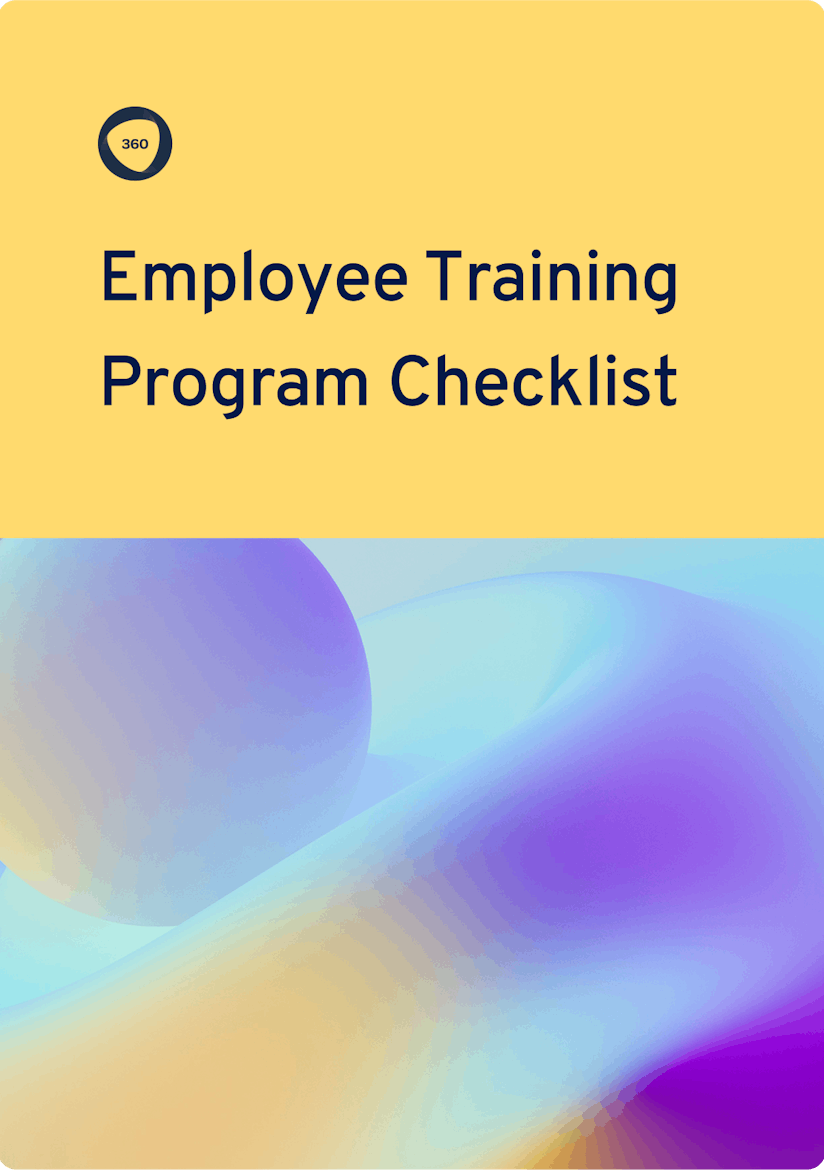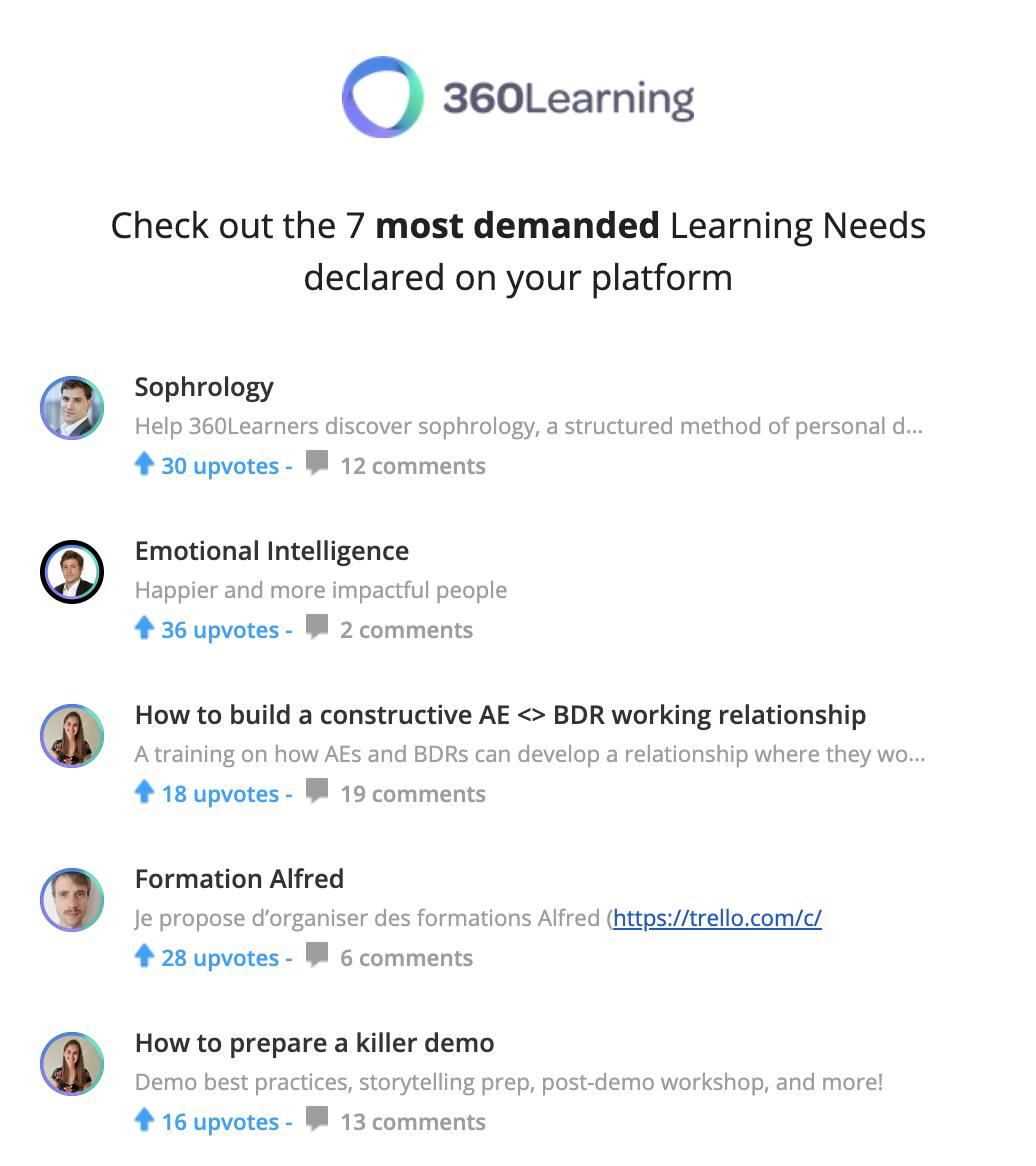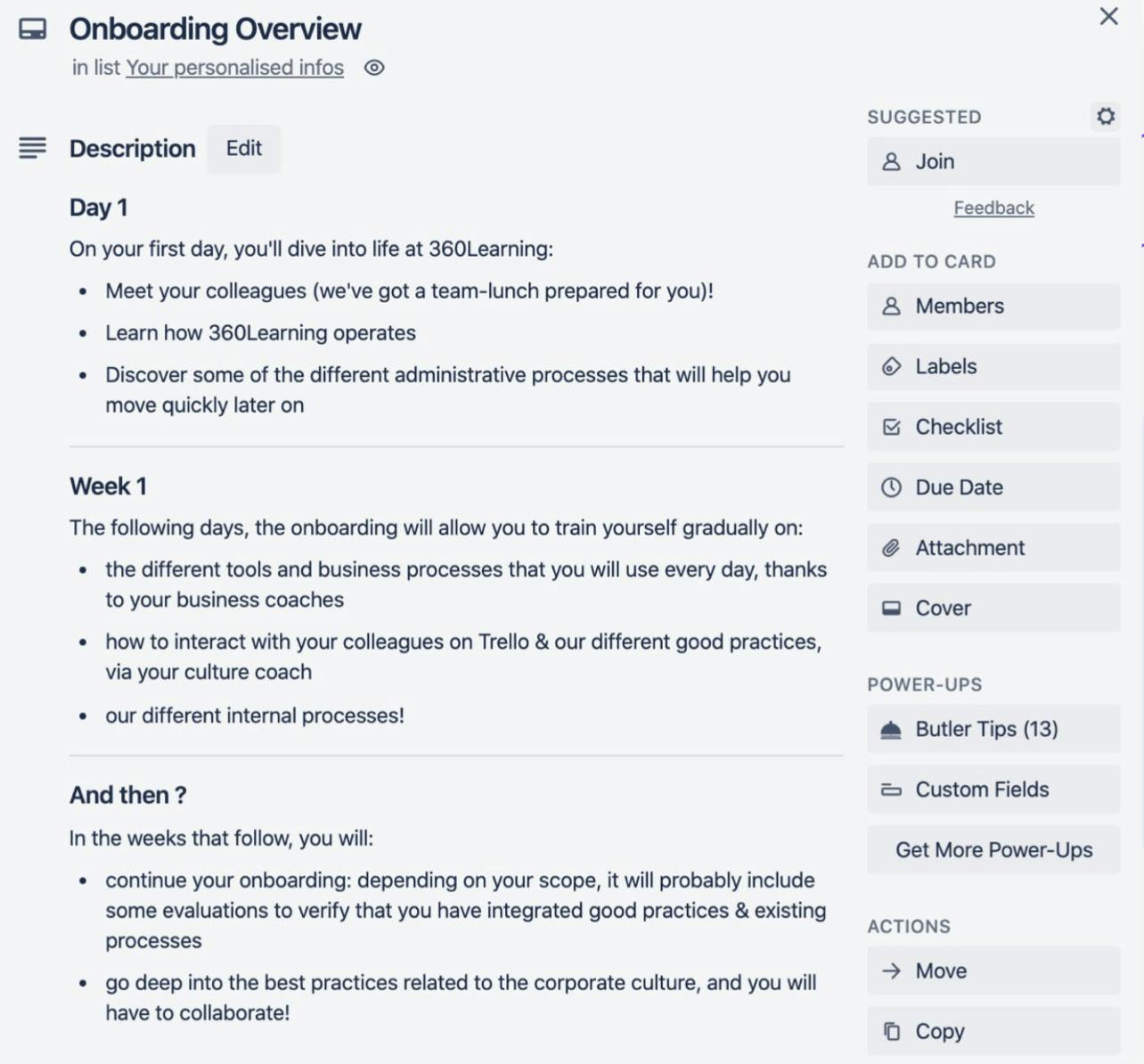Discover the learning platform powered by collaborative learning.
A 15-minute discussion with an expert
100% tailored to your needs - with ❤️
No commitment. Free as can be.
When it comes to offering employee training programs, you can’t afford to wait. Investing in employees through training leads to better retention, productivity, and satisfaction.
Employees say that learning new skills is their number one priority at work, and 81% say that the learning programs provided by their employers helps them do their jobs better (State of Online Learning Report).
To cultivate a highly engaged and high-performing team, you need an employee training program that can deliver results. But, if you’ve never built a structured training program, it can be challenging to start from scratch.
While your company’s employee training program will need to be crafted to meet unique requirements and goals, you can use pre-built templates and checklists as jumping-off points to build a scalable and productive training initiative.
We’ve gathered some of the top employee training checklists and templates and paired them with some of our best tips for building a better employee training program. Use these resources as the building blocks to help you design a dynamic, scalable training process for your organization. And download our handy employee training checklist to speed up the process and make sure nothing slips through the cracks.

By providing your contact info, you agree to receive communications from 360Learning. You can opt-out at any time. For details, refer to our Privacy Policy.
Launching a brand-new L&D program involves a lot of decision-making. It can be challenging to know where to start. These employee training policy templates can help you nail this step by making sure you don't miss anything important when writing your first policy.
If you're putting together a formalized employee training plan— perhaps based on a collaborative learning approach — start by writing a policy that covers your organization's approach to or perspective on training and how it supports growth. Your training policy should include the following essential components.
These training policy templates offer concrete examples of how to structure your guidelines:
At its core, providing valuable training to employees is about identifying the most pressing training needs and then fulfilling those needs through courses, seminars, or other learning materials. But how do you pinpoint what your employees need to learn?
Traditionally, managers or L&D leaders have owned the training needs analysis process. They identify areas where they think employees would benefit from training, then push those needs to the appropriate parties. The problem with this top-down approach is that it’s time-consuming and not consistently accurate. Without employee input, managers are simply making their best guess.

Instead, we recommend a bottom-up approach to training needs analysis, where you source potential training needs directly from employees. Employees propose possible training courses based on their experience and the gaps they see in their knowledge. With the right tools (like a learning platform that combines collaborative tools with the power of a Learning Management System), you can even have employees vote on each other’s ideas.
This ranking system helps you determine the scope of each potential training need. Using our platform, for instance, employees can upvote learning needs, which improves the visibility of skills they're most interested in learning.

After you’ve created a list of employee-sourced training needs, learning managers should prioritize them in terms of their potential impact on employee performance and the cost and effort to fulfill them. This skills gap analysis will help you choose which training to create first and which to put on the back burner.
These training plan templates can help you assess and prioritize training needs:
You can create the most impactful learning content the corporate world has ever seen, but it won't matter if your teams don't know how to find and use it. Employee development plans serve as a roadmap for individuals, outlining what they need to do to enhance their skills and progress within your organization.
Organizations employ development plans throughout the employee lifecycle to:
Ideally, every employee should have a customized development plan to guide their training journey. Managers are typically responsible for setting these learning paths during conversations with employees about their goals and knowledge gaps.
Employees would then pursue these learning goals by taking courses and finding other learning opportunities like listening to podcasts or taking specialized LinkedIn courses. This self-directed learning isn't just more efficient; it also encourages employees to take complete ownership of their career ambitions.
There are many different ways to organize and format an employee development plan. At 360Learning, we use Trello to create a macro view of major training processes, like onboarding.

These training templates can help you build your employee development plans:
After you’ve laid out learning objectives and a training roadmap, you need to track each employee’s progress toward those goals.
We present these tracking and training schedule templates with a caveat: tracking training progress manually is becoming increasingly obsolete. It’s far more efficient to invest in a learning platform that automatically tracks employee progress and performance. The right software makes it much easier to keep tabs on each employee's training progress.
It's essential to measure your training programs' ROI to prove their efficacy and get more buy-in and a bigger budget. Training ROI templates can help you gather the data you need. While it can be easy to let ROI reporting slide, keeping careful records of your program’s impact and overall benefit to the company is crucial for the long-term health and growth of your L&D program.
But measuring training ROI is notoriously difficult. How do you assign quantifiable value to improvements that are primarily qualitative?
We have a few tips.
Here are some helpful training templates for calculating and documenting your program’s ROI:
Training templates are great for fleshing out your training programs, but to create a scalable, sustainable online training program, you also need the right software.
A great eLearning software platform will automate many of the processes described above, eliminating paperwork and potential disorganization and confusion. Automation saves a great deal of time, eliminates redundancy, and allows L&D leaders to focus on the most critical parts of a great employee training program: robust goals, impactful content, and innovative thinking. And when you’re not bogged down in paperwork, you can focus on the greater purpose of actually helping employees learn, grow, and get results.
360Learning makes it easy to assess training needs, create individualized learning paths, and track employee performance, course completion, and ROI. It also lets your employees collaborate and create courses, so they can learn from one another.
Interested in seeing 360Learning in action? Book a demo whenever you like.
A 15-minute discussion with an expert
100% tailored to your needs - with ❤️
No commitment. Free as can be.
By providing your contact info, you agree to receive communications from 360Learning. You can opt-out at any time. For details, refer to our Privacy Policy.